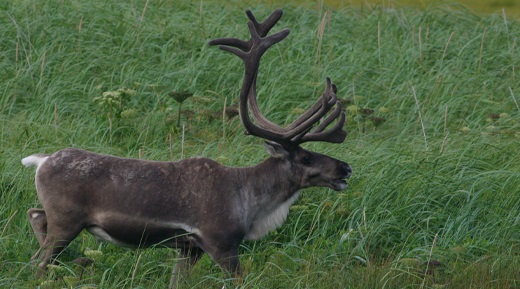Reindeer Populations Are Disappearing Worldwide

Reindeer populations are in trouble around the world, and in China, the iconic animals are on the decline largely because of inbreeding, according to new research.
Some folklorists say Christmas tales of flying reindeer may have originated as a hallucination, with one theory claiming the inspiration for Santa Claus came from shamans who would give out bags of hallucinatory mushrooms in late December in the Siberian and Arctic regions. But, nonflying reindeer are very real and an important part of northern ecosystems.
Reindeer populations currently live in Finland, Sweden, Norway, Canada, Alaska, Russia, Mongolia and China, and populations across the board are declining. In the new study, researchers from Renmin University in Beijing focused on the reindeer population in China, which has declined about 28 percent since the 1970s. [6 Surprising Facts About Reindeer]
Reindeer first migrated to China from Siberia about 2,000 years ago along with the Ewenki tribe, according to the researchers. The Ewenki people are reindeer herders, and they have a similar relationship with reindeer as Native Americans had with buffalo. The Ewenki do not fully domesticate the reindeer, but provide the herd with basics like salt, and use the animals for their meat, hides and milk.
The researchers determined how many reindeer were left in China (about 770) by interviewing the Ewenki herders and looking through old population records. The Ewenki often tie colored ribbons around the reindeer's necks to help differentiate the animals.
The researchers pointed to several reasons reindeer populations are decreasing, but the number one cause they found was inbreeding. Reindeer are split up into small, shrinking groups and have very few mating options. Without more genetic variation, the populations will eventually collapse, the researchers said. Poaching is also a problem, since reindeer antlers can fetch a pretty price. Both male and female reindeer have antlers, so snares set up to catch reindeer do not target a specific sex.
Further, more and more of the reindeer's historic caretakers are opting for different careers. Ewenki herders are usually young men, and many have trouble adjusting to the isolation of the forest-covered mountains where the animals live. As of 2012, there were only 33 reindeer herders left in China. The lack of herders means that reindeer that get lost from the group usually stay lost, and those caught in poaching traps are generally not rescued.
Sign up for the Live Science daily newsletter now
Get the world’s most fascinating discoveries delivered straight to your inbox.
Moving the herds closer to civilization may make more Ewenki people willing to sign up as herders, but when moved closer to cities, reindeer are often hit by cars, kept as pets or slaughtered for tourists.
The Chinese government is starting to address the problem. In 2012, they brought in 29 reindeer to participate in an artificial insemination program designed to work against inbreeding and reverse the loss of genetic variation.
The researchers suggest the Chinese government should also set up natural reserves or parks to preserve the species. In addition, the scientists are urging world leaders to pay more attention to the Association of World Reindeer Herders, which spans several northern countries and represents more than 20 different ethnic groups.
Reindeer are currently listed on the International Union for Conservation of Nature's threatened species list under the "least concern" category. But the researchers say this classification, which is based on a 2008 survey of the population, needs updating.
Strengthening the declining population could also boost the health of ecosystems and enhance local economies, the researchers said.
The findings were published in the December issue of the Journal for Nature Conservation.
Follow Kelly Dickerson on Twitter. Follow us @livescience, Facebook & Google+. Original article on Live Science.










